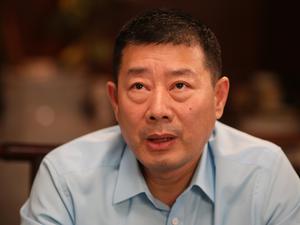据环球时报转自美媒的报道,在威尼斯举行的“马可·波罗、《马可·波罗游记》与亚洲:二十年后的研究展望”国际会议上,一个由意大利地质学家、考古学家、化学家和艺术史学家组成的团队介绍了一项引人注目的新发现:威尼斯圣马可广场的标志性青铜飞狮“威尼斯之狮”可能起源于8世纪的中国。
A new study has revealed that the iconic bronze-winged lion in St Mark's Square, Venice, may have originated in 8th-century China.
The discovery comes from a multidisciplinary team of experts in geology, chemistry, archaeology, and art history from the University of Padua, the Ca' Foscari University of Venice, and the International Association for Mediterranean and Oriental Studies (Ismeo).
 青铜飞狮 图源:Finestre sull'Arte
青铜飞狮 图源:Finestre sull'Arte青铜“威尼斯之狮”矗立在花岗岩柱的顶部,俯瞰着圣马可广场。至少自1293年以来,这座巨大的雕塑就成为这个意大利城市的象征之一,并被认为与威尼斯守护神圣马可有关,因为后者的化身是一头飞狮。
“威尼斯之狮”的形象遍布威尼斯文化的每个角落,各类旗帜、画作、雕塑,再到威尼斯电影节的金狮奖杯,处处都有“威尼斯之狮”的身影。
 宗教中的圣马可飞狮
宗教中的圣马可飞狮 威尼斯电影节金狮奖的飞狮造型
威尼斯电影节金狮奖的飞狮造型最初,关于“威尼斯之狮”的史料并不详尽,只知道它大约在12世纪被人安放到了圣马可广场的花岗岩柱顶端,成为威尼斯城的象征之一。到18世纪末,拿破仑横扫欧洲,在攻占威尼斯后,“威尼斯之狮”被拿破仑当战利品运到了巴黎荣军院,直到1815年拿破仑战败,才再一次回到威尼斯。
二次世界大战期间,为了防止遭人破坏,威尼斯人偷偷把“威尼斯之狮”藏了起来,到二战结束才重新安回花岗岩柱顶端,并在上世纪90年代进行了多次修复工作。也正是修复期间,专家们意外发现“威尼斯之狮”的身体部分历史相当悠久,可能不止数百年。
Over the centuries, the lion has undergone several restorations. In the 1790s, Napoleon looted the statue and transported it to Paris, where it was damaged during its return to Venice in 1815. The Venetian sculptor Bartolomeo Ferrari restored the statue, making additions like the lead book beneath its paws, while retaining most of the original structure.
 圣马可飞狮正面
圣马可飞狮正面三十多年过去,科学技术有了大幅度进步。这些年,威尼斯的考古学家们也给飞狮做了多次详细的溯源检测。意大利帕多瓦大学多名专家取了三份“威尼斯之狮”的样本,其中两份来自飞狮的身体中心部位,另外一份来自翅膀。
During the last thirty-five years, the archives of lead isotope chemical data have expanded enormously, explained Massimo Vidale, an archaeologist at the University of Padua and promoter of the study, so it seemed appropriate to try to see where the lead isotopic signature of the three samples fell.
专家团队通过先进的冶金分析发现,两份中心部位样本和中国长江中下游的矿物高度吻合。这座飞狮使用的青铜很大一部分来自中国东南部的长江下游流域,很可能是在唐代 (公元618-907年) 铸造的。
Through advanced metallurgical analysis, the team discovered that a significant portion of the bronze used in the lion came from the lower Yangtze River basin in southeastern China, and it was likely cast during the Tang Dynasty (618-907).
在对飞狮的风格、造型进行多方面分析后,帕多瓦大学的专家们得出一个可能性较大的假设:“威尼斯之狮”最初的造型或许不是一头狮子,而是一头来自唐朝的头上有犄角的青铜“镇墓兽”,在唐末就已经被中国工匠铸造了出来。
大约1172年到1295年之间,这头青铜“镇墓兽”辗转来到威尼斯,被本地工匠进行了改造:这头镇墓兽的角被切掉,耳朵被磨圆,令它的头看起来更像狮子,之后又给它装上浇铸的翅膀。最后变成了现在人们熟悉的“威尼斯之狮”的样子。
Researchers found that the lion shares several design features with zhenmushou, or "tomb guardian" figures, typical of the Tang Dynasty.
These guardian sculptures, often placed at tomb gates to ward off evil spirits, had distinct characteristics that mirror those of the St Mark's lion. For instance, the lion's wide nostrils, upturned mustache, wide-open mouth with prominent canines, and truncated orbital sockets, where horns or antlers were once mounted, are all common features of zhenmushou statues. The lion’s ears also appear to have been modified to make them look more like those of a typical lion, rather than the pointed ears seen on zhenmushou.
 唐式镇墓兽
唐式镇墓兽可是12世纪的威尼斯人,怎么可能把镇墓兽从遥远的中国带回威尼斯?著名探险家马可·波罗在1264到1266期间到了中国,而他的父亲和叔叔早几十年前就游历了中国。有人猜测是这一批威尼斯探险家在12世纪把镇墓兽运到威尼斯,改装成“威尼斯之狮”。
也有人认为它可能首先沿着丝绸之路来到地中海东部。丝绸之路为地中海地区带来的绝不仅是中国丝绸:中国铜镜在中世纪早期就备受欢迎,香料、药品等也是如此。
The circumstances of its arrival remain mysterious, with some speculating that the lion could have been brought to Venice by Marco Polo's father, Nicolò, and his uncle, Maffeo, who visited the Mongol court in Beijing between 1264 and 1266. Others believe it may have arrived earlier, perhaps during a time of intense trade along the Silk Road.
 威尼斯媒体报道截图
威尼斯媒体报道截图关于“威尼斯之狮”的历史真相还有待继续发掘,它最初由谁铸造?在哪里铸造?又经历了怎样的波折抵达威尼斯,最终矗立到了圣马可广场上?这背后还充满了大量未解之谜,恐怕只有等历史学家在未来进一步发掘真相了……

VIP课程推荐
APP专享直播
热门推荐
收起
24小时滚动播报最新的财经资讯和视频,更多粉丝福利扫描二维码关注(sinafinance)







